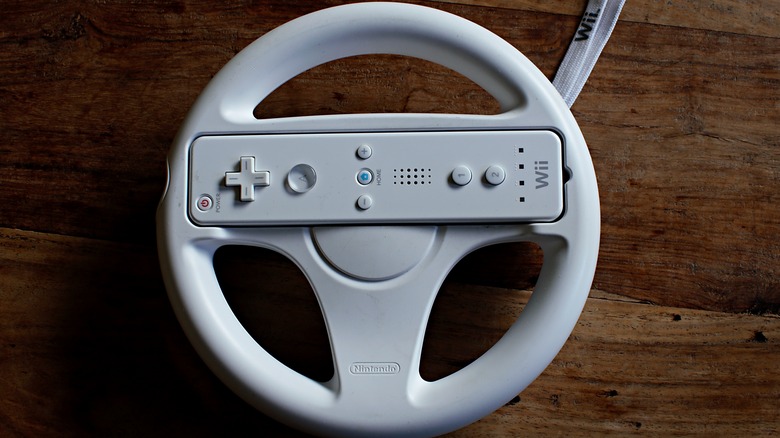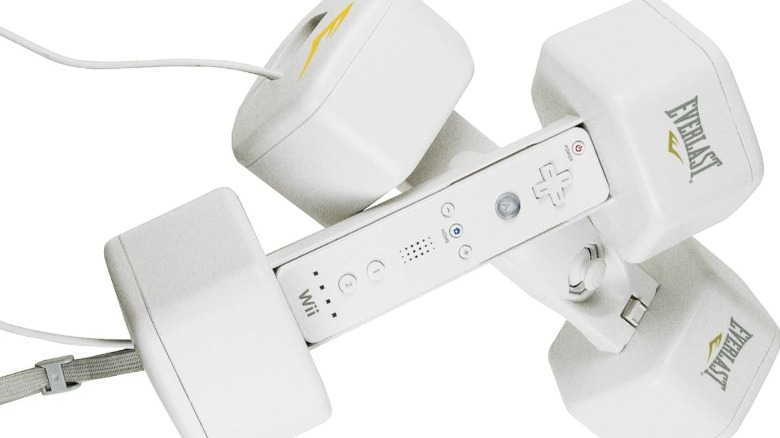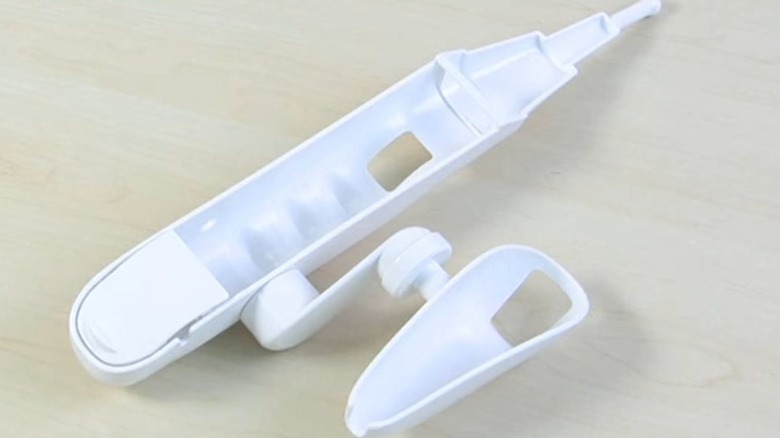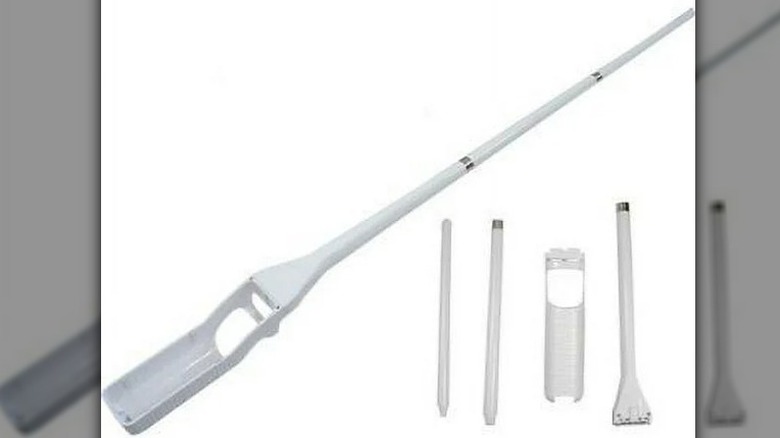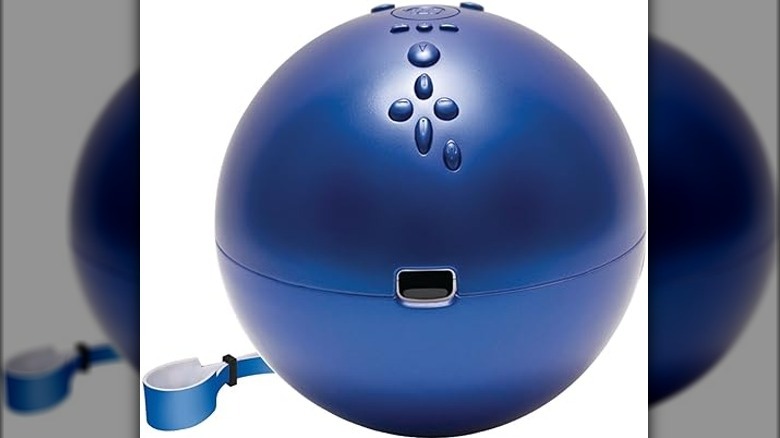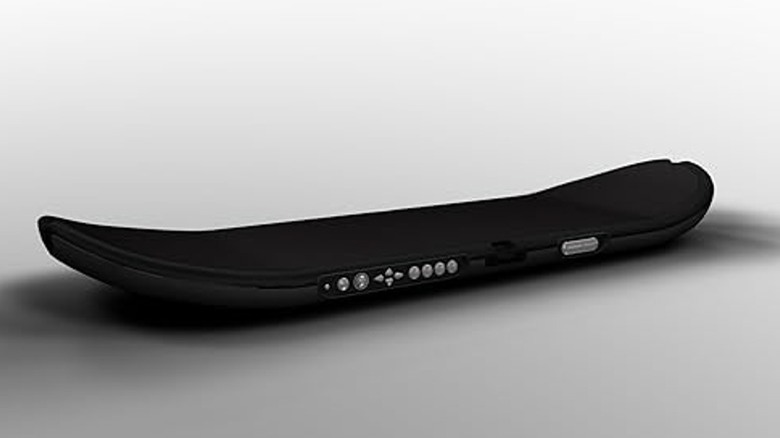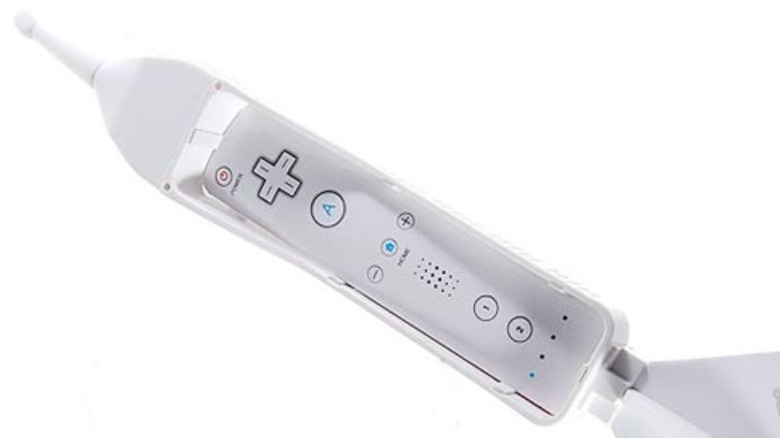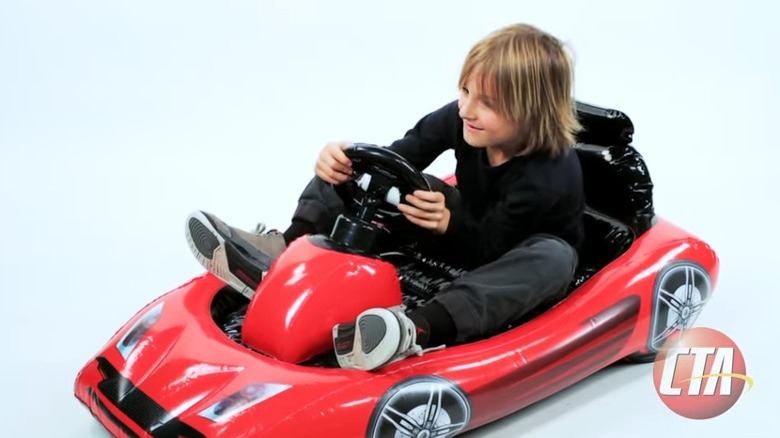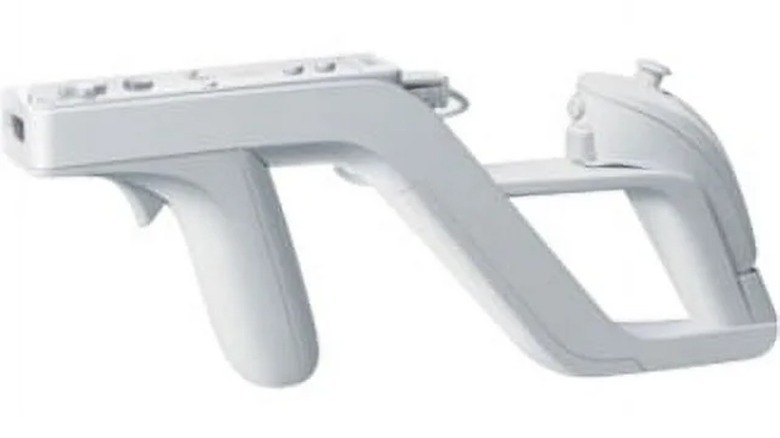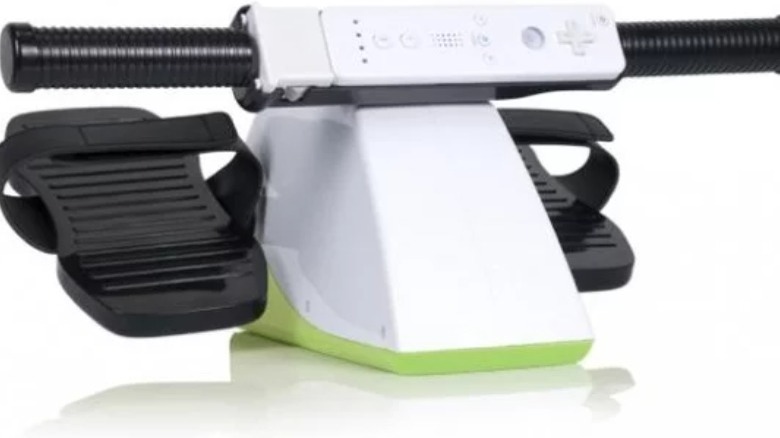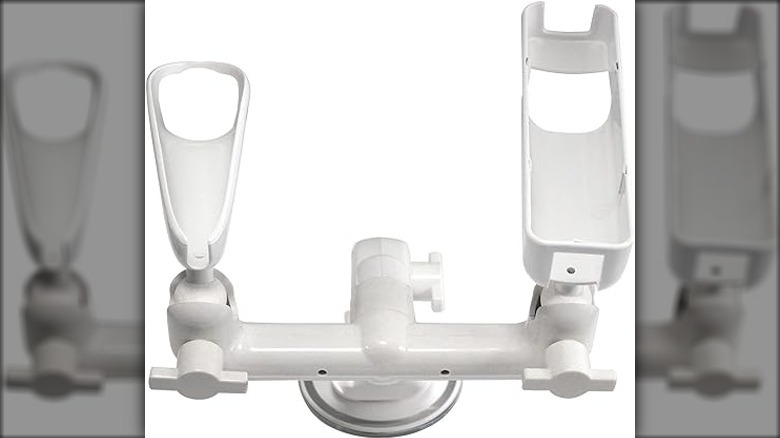10 Of The Weirdest Controller Accessories Ever Made For The Nintendo Wii
We may receive a commission on purchases made from links.
The Nintendo Wii brought the Japanese company a level of success that it had not seen since the release of the original Nintendo and its follow up the Super Nintendo –- outside of the Game Boy and the handheld's successors, of course. Despite not being as powerful as either the PlayStation 3 or Xbox 360 and lacking support for many popular third-party titles, it managed to become one of the best-selling consoles of all time. Beyond that, not only did it help revitalize the fortunes of Nintendo, but it also helped popularize motion controls.
In fact, the surprising success of the Wii was largely down to those innovative motion controls, which offered a more interactive gaming experience than had previously been possible. The Wiimote and Nunchuk allowed players to simulate a wide array of actions to control games, ranging from pretending to bowl or play tennis in "Wii Sports" to shooting a gun or wielding a sword in combat titles.
This opened up many possibilities for accessories and peripherals as Nintendo and other companies tried to cash in on the craze. Of course, this produced some truly weird and wonderful controller accessories that aimed to take advantage of the motion controls. Here are some of the most bizarre examples that were released.
Everlast Dumbbells
Unlike many of the attachments and controller accessories that were produced for specific games, these Everlast Dumbbells are more of a generic item that doesn't have a set title in mind for their use. After all, a large number of fitness-based games were developed for the Wii, giving players the opportunity to get more active with various exercises and workouts. These include the likes of "Wii Fit," "EA Sports Active," and "Just Dance," all of which utilize different fitness peripherals to track movement and measure your activity level.
The concept behind the Everlast Dumbbells is to make playing any game on the Wii a workout instead of just the fitness-focused titles. Each set of weights adds two pounds to a standard Wiimote, with the dumbbells covering each end of the controller. The dumbbells essentially make the Wiimotes heavier and harder to lift, requiring more effort from players to move them around. Over time, the relatively small amount of added weight should help users lose some extra calories, especially during games that use a wide range of motion for gameplay.
The Everlast Dumbbells come branded with a well-known sports company and don't stop the functionality of the Wiimote, with the IR sensor and buttons all still accessible. While they may look pretty strange, many reviews point out that they can help you break a sweat while playing, although they do make controlling non-fitness games unwieldy.
Fishing rod
Fishing is a popular pastime both in the world and in video games. There are not only a large number of games based specifically on fishing, but many other titles also include fishing elements, stretching all the way back to "The Legend of Zelda: Ocarina of Time" on the Nintendo 64. As such, it shouldn't come as much of a surprise that there were lots of fishing games released for the Nintendo Wii, including the likes of "Fishing Resort," "Real Motion Fishing: Hooked Again," and "Rapala: We Fish."
Fishing is a perfect accompaniment for motion controls, as players can replicate the exact real-life movements in-game to cast off and reel in their catch. To go along with these various fishing games, several publishers launched accessories to help make the experience all that more realistic. Most of them simply attach to the Wiimote to make it look more like an actual fishing rod.
For example, "Rapala's Fishing Frenzy" came with a fishing rod that used the Nunchuk as a reel and made the Wiimote longer, although this looks like a toy fishing rod rather than the real thing. Meanwhile, a "Bass Fishing" game also included a fishing rod accessory that even extended to a ridiculously long 50 inches to make it entirely impractical.
Billiard cue
It didn't take long for the Nintendo Wii to become flooded with pool and billiards games after the console was released in 2006. The launch game "Wii Play" included a billiards mode among its fishing, shooting, and tank combat mini-games, and within just a year there were numerous other billiards titles on the market for players to purchase. These included everything from "Pool Revolution: Cue Sports" to officially licensed games such as "WSC Real 08 World Snooker Championship."
Just like with the various other plastic attachments that quickly hit store shelves around the world to make the Wiimote resemble a tennis racket or golf club, publishers also created plastic cues so that players could feel more like they are actually playing pool and training up their real-life skills while using the video game. As you may have guessed, they range from the cheap and cheerful to the more expensive premium options.
One of the earliest examples was a $13 pool cue attachment that came in three parts and effectively extended the Wiimote size after clipping on top of the controller. A similar design was included in "WSC Real 08: World Snooker Championship" as part of a deluxe special edition box set. Perhaps the most extravagant, though, was the high-end RealMotion Pool Cue that was created to be used with "American Pool Deluxe."
CTA Bowling Ball
"Wii Sports" was the phenomenon that helped launch the Nintendo Wii. Released alongside the console in 2006, the sports simulation game allowed players to try out several different activities. These included tennis, baseball, golf, boxing, and bowling, all of which were designed to showcase the capabilities of the console and the motion controls of the Wiimote and Nunchuk. The game became a huge success thanks largely to the fact it came packaged with the console in many cases, making it one of the best-selling games of all time.
Among the sports included in the game, bowling was arguably the most popular and enduring. It even had famous fans, with the late Queen Elizabeth II reported to be a fan. Like the other modes in "Wii Sports," third-party manufacturers quickly began to pump out cheap plastic accessories for the Wiimote that served no practical use and were targeted towards children.
What makes the CTA bowling ball different is that this isn't a mere attachment but rather a complete replacement for the Wiimote. Styled to look like a real bowling ball, it has all of the buttons you'd find on a normal Wii controller in addition to finger holes for you to hold it like you would at a bowling alley. Of course, mimicking throwing a ball at speed without a wrist strap could be disastrous for your living room if you accidentally let go, something that makes this accessory dangerous as well as weird.
Wii Skateboard
Skateboarding games are not exactly in fashion anymore but when the Nintendo Wii was at its peak, the likes of "Tony Hawk's Pro Skater" and EA's "Skate" franchise were still big sellers. In that sense, it isn't a huge shock that a publisher like Activision — who was known at the time for producing plastic peripherals for games such as "Guitar Hero" and "DJ Hero" — would want to get in on the action and make some extra money from additional accessories for the Nintendo Wii, especially considering how so many other manufacturers were seeing success.
That led to the "Tony Hawk: Ride Skateboard Bundle," a package deal that includes "Tony Hawk: Ride" alongside a life-size skateboard replica. The controller is essentially a deck, a skateboard without wheels and trucks, and can be used to control all of the action within the game. Players don't need any additional Wiimotes or other controllers, with gestures and movements performed on the deck translating into in-game actions. Also available on PlayStation 3 and Xbox 360, Activision promised that the skateboard peripheral would be truly accessible, allowing experienced and novice skaters to get a taste of the thrill of skateboarding.
Unfortunately, "Tony Hawk: Ride" was hit with a wave of negative reviews when it launched, with some outlets even calling it the most disappointing game of the year. The unique controller wasn't received much more enthusiastically and the only positive aspect was its sturdiness.
Wii Dart
Pega answered a call that absolutely no one had put out in 2009 when it released a dart accessory for the Nintendo Wii. According to the manufacturer, the accessory "brings real feelings and great fun when playing dart games on Wii," although the chunky product wasn't officially partnered with any specific game. In fact, there were not all that many darts games on the Wii outside of the likes of "PDC World Championship Darts 2008" and some mini-games built into larger titles.
Retailing at less than $10, this darts accessory is probably one that should have been avoided at all costs. It is tacky, ugly, and so large that it more closely resembles a lawn dart than a dart you'd expect to see thrown in a pub. The accessory also fully encases the Wiimote and essentially turns it into a projectile that is both dangerous to people and objects around anyone using it. It isn't hard to imagine this accessory being accidentally launched into a television screen or a person's eye, especially when you consider the product is meant to replicate an item that is meant to be thrown.
An inflatable kart
The popularity of racers such as "Mario Kart" on the Nintendo Wii quickly led to a swathe of driving-related accessories for the console. A lot of these made sense and made racing vehicles of all kinds in various video games more immersive. The most common was the plastic steering wheels that encased the Wiimote, which helped add some extra finesse by giving players more control over the motion of the controller as well as often adding more accessible buttons or triggers for braking and accelerating. Nintendo even created its own official peripherals.
As useful as these accessories are, one company took the whole immersion idea a little too far. In 2010, CTA Digital released the Inflatable Racing Kart for Wii. This monster of an accessory didn't just provide a steering wheel but the entire kart, allowing players to sit in it and pretend as if they were actually racing a real vehicle. Supporting up to 250 pounds, the accessory was compatible with child and adult users and worked simply by placing the Wiimote into the center of the kart's steering wheel. It could also be inflated with a standard air pump and would work with the Wii MotionPlus — all for the price of around $30 in total.
Wii Zapper
The Wii Zapper is unique in that it is an accessory that Nintendo directly developed and launched itself. Older gamers may recognize the name, which is a clear reference to the NES Zapper, a light gun that Nintendo released for the NES and famously worked with "Duck Hunt." Unlike its predecessor, though, the Wii Zapper was not a replacement controller that could be used on its own. Instead, the product was designed to house the Wiimote and Nunchuk, holding them in place and positioning them so they appeared to create a small plastic gun.
Shigeru Miyamoto explained that the Wii Zapper concept arrived early on during the development of the Wii, with the team wanting to make it easier for players to hold the controllers for a long time and not get tired. "What we found is that the reason we wanted to have a Zapper is when you hold a Wii Remote, it can be difficult for some people to keep a steady hand," Miyamoto explained to Mercury News. "And holding your arm out like that can get your arm somewhat tired."
The end result was the Wii Zapper, which closely resembles a submachine gun and is both light and relatively small. Reviews for the product were largely mixed, with many critics noting that it wasn't really all that necessary and made using the face buttons on the Wiimote difficult.
CTA Rowing Machine
During the time of the Nintendo Wii a company called CTA Digital became somewhat infamous for its excessive and often unnecessary accessories. During that era, CTA Digital released a torrent of peripherals and controller attachments that were designed to take advantage of the Nintendo Wii's motion controls and provide a more realistic playing experience for gamers. Among the many superfluous products launched during that time, the CTA Rowing Machine for Wii might be the strangest and most redundant.
As you may have guessed, this accessory was intended to mimic the action of using a rowing machine. However, there are a few problems with this. Not only does the machine not really serve much purpose as it is very much possible to carry out this sort of action without the need for any additional accessories but there are also very few games that could utilize it. "Wii Sports Resort" had a canoeing mode that still wasn't exactly a great fit for the product, although "Wii Fit Plus" did have some rowing exercises.
Even in those games, though, the CTA Rowing Machine offered little real benefit as the seat doesn't slide and the tension options barely change the amount of force needed to pull back the Wiimote. Reviews from customers generally point to this being an accessory players would do best to avoid.
OSTENT Airplane Controller Stand
When people think of flight control joysticks and controller systems, they'll generally picture people playing games such as "Microsoft Flight Simulator" on PC. These expensive peripherals create a more realistic experience so that gamers can better simulate what it is like to pilot an aircraft and have finer control of the vehicle they are flying. While many of these types of controllers are available on other platforms, the Nintendo Wii is not one that is likely to jump to your mind.
After all, the Nintendo Wii was the least powerful of the major consoles when it was released and simply wasn't capable of running games like "Microsoft Flight Simulator." It did have some flying games but these were mainly racers similar to "Mario Kart," with colorful visuals and a simplistic cartoon aesthetic — exactly the type of game that doesn't need a sophisticated flight control system.
Yet, that didn't stop OSTENT from producing the Plastic Airplane Controller Stand. However, rather than being an expensive piece of equipment, this was simply a stand that would hold the Wiimote and Nunchuk in a way that resembles a flight controller. It offered no other use than holding the Wii controllers in place and would likely not even work well with most flying games as it wasn't designed with any specific control scheme in mind.
